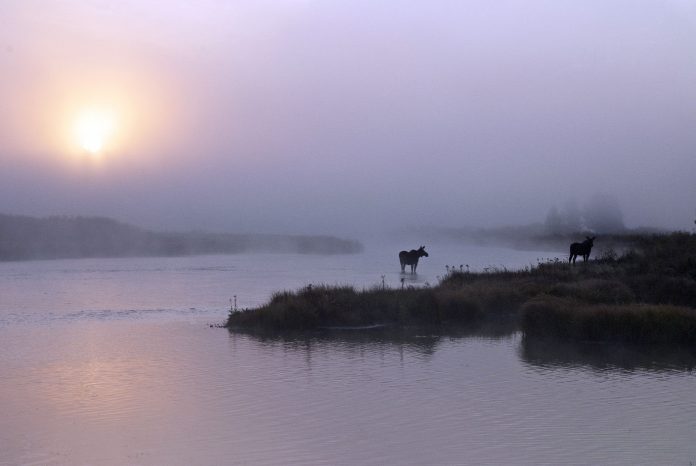The journals and other writings of the first Europeans to reach the American West describe an amazing abundance of wildlife. Massive bison herds running at a full gallop took an hour to pass. Grizzly bears, pronghorn, elk, and beaver were regular and common sights. At each equinox, the skies were dark with migrating waterfowl.
It would have been wonderful to see, but those fecund days are gone forever. We have corralled their few remaining descendants into parks and refuges that we have protected from our ravenous ways. On a recent road trip, I was surprised to witness a bit of wildlife beauty and drama from that bygone era.
Sleeping bag, tent, cooler and a duffel of clothes; toss these in the back of your car along with a camera and a couple maps and you’ve got yourself a road trip. My companion, Dave Sellers, and I have gray hair, but our plan was built for boys barely out of high school. We were a male “Thelma and Louise” (minus the killing) heading toward the Rockies with an itinerary that never peered more than a day into the future and might change on a moment’s notice. We had circled a portion of the map where Montana, Wyoming and Idaho converge in pursuit of scenic mountains, rivers, fall color and—if we were lucky—wildlife.
We were lucky.
In Jackson Hole, we spurned the crowds at Grand Teton National Park and drove many dirt road miles out Gros Ventre Road where we hiked over a small hill and dropped into a broad valley bisected by a lazy and lovely Crystal Creek. That afternoon, as we left the trailhead parking lot, we met a herd of about 50 pronghorn does followed by a single male carefully managing and protecting his harem. These elegant beasts bound through the sagebrush slopes with a balletic athleticism that was a thrill to watch.
Several days later, we camped along the Madison River. The next morning, a low valley fog chilled the air. As we headed out of the campground, we decided to have one last look at the river. Good thing. The lazy stream reflected the changing view of the conifers through shifting puffs of fog. Just above the pine silhouettes rose the hazy orange orb of the sun. Standing motionless—one in the middle of the river, the other on the nearby shore—were two moose. Had I wished for such a postcard scene from the genie in Aladdin’s lamp, he would have angrily dismissed my request as ridiculously excessive. But there it was.
The Lamar Valley in Yellowstone is a famous haven for bison, wolves and grizzlies. We drove through the valley one afternoon and found countless bison grazing comfortably near many roadside onlookers. The next morning, we got an early start headed for Slough Creek, a side canyon of Lamar Valley. As we drove toward the trailhead, I startled Dave with a loud scream: “A carcass!” We got out of the car to take a closer look. Sure enough, during the night a cow elk had been killed and eviscerated by a pack of wolves. The head and legs were intact, the lungs were on the ground close by, but the body cavity was empty and the ribs were picked clean. My mouth hung open at the thought of the drama that had occurred just hours before. On the chance we might see one of the culprits, we walked the hills a short distance down the road and saw a wolf prance across the slope near the kill. Wow.
Homeward bound, north of the Sawtooth Mountains in Idaho, we turned down a side road along the Salmon River. We stepped out of the car to simply admire a magnificent river scene. Several hundred yards away, a large raptor was thrashing in the river, presumably wrestling a fish. Looking into the sun, we could only see the silhouette of the bird struggle to the cobbled shore with its heavy catch. Finally, he took off, struggling to gain altitude. As he rose above the blinding sun, we could see it was a bald eagle carrying a trophy trout.
The primeval wild west of Lewis and Clark is gone. Today, the animals are collared and the mountains are mapped and managed. But I learned that if you get up early and visit the side roads rather than the gift shops, there is a little wild left in the west.










